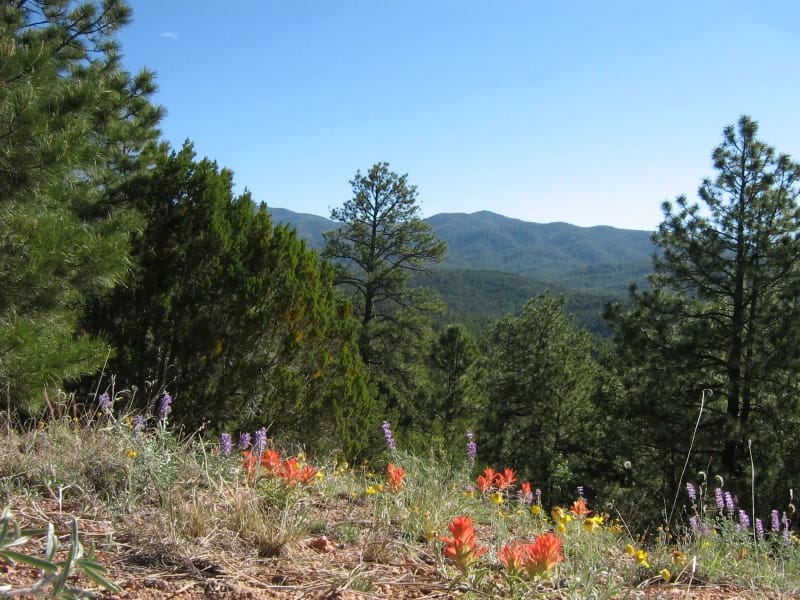Letter from the editor
A transformation is taking place in our forest.
It’s changing by the year as the climate becomes warmer and dryer. Existing vegetation in many areas is becoming more marginal. Those of us who live by and with the forest can see it happening. Some years we wonder if the trees will even make it, and then the rains come and they look healthy again. But they don’t seem to be able to tolerate even relatively small impacts.
The forest is resilient in its own way when left free of human interventions. It’s evolving into the healthiest forest possible given current conditions, even if it doesn’t always look that way to us after natural forest processes such as wildfire and bark beetle outbreaks. There will likely be major shifts in vegetation types.
It appears to be difficult, or even impossible for our forest to recover ecological balance and function after fuel treatment projects — extensive thinning followed by periodic prescribed burns. We can see this in the Santa Fe watershed which was thinned and first burned two decades ago. Many treated areas still look like a forest wasteland, not functional forest.
Thinning prescriptions normally call for the vast majority of trees to be removed from large areas of forest. This can involve heavy machinery, damage to trees left behind both above the soil and below, and roads built or improved out in the forest which can cause erosion and wildlife fragmentation. These roads carry the impacts of the public further out into the forest — including increased fire risk. Thinning slash creates increased fire and insect outbreak risk.
Existing research from the US Forest Service and its partners estimates that our local forest historically burned every 5 to 15 years, and prescribed fire regimens often follow that general framework. Newer studies by independent researchers estimate that fire came to our forest much less frequently — one study estimates it came at an average of every 55 years for dry mixed conifer and ponderosa pine in the Santa Fe watershed. The too-frequent prescribed fire is not allowing a healthy understory to return, and along with too-intensive thinning, is in many cases leaving our forests too open, barren, dry and ecologically brittle. And sometimes prescribed fire actually causes fires, such as the Cerro Grande Fire, the Hermits Peak Fire, the Calf Canyon Fire and the Cerro Pelado Fire.
There have been many detrimental human impacts to our forest ecosystem over the years — logging, livestock grazing, off-road vehicle use, mining, road-building, excessive fire suppression, and human caused fires. The forest needs to heal. Another massive intervention in the form of widespread thinning and prescribed fire is just another man-made solution to a man-made problem. Is it really going to work this time?
The forest has its own intelligence. It can heal itself, in time, likely much better than any treatment we humans can apply. Natural fires in our forest of all intensities help the forest to renew itself and promote biodiversity.
We know how to protect our homes in the wildland/urban interface — fireproof structures and land 100 feet surrounding homes. This has been proven, including by US Forest Service researcher Jack Cohen.
There are careful forest restoration projects we can undertake — to de-commission roads, restore riparian areas, build earthen dams to reduce flooding risk and to re-introduce beavers. Some very limited and light-handed thinning and burning may be needed, but only for strategic and site-specific reasons. This requires open-minded utilization of newer forest and fire ecology research. It also requires new local research that is not based on the assumption that widespread thinning and burning are necessarily a benefit in the cost/benefit analysis. And it requires just slowing down the process.
It’s time to embrace a new paradigm for the forest. Instead of imposing the framework of our limited ecological understanding and perspective onto the forest, let’s be allies of the forest, to help support it’s inevitable transformation. Let’s respect and honor life. First do no harm.
For the forest,
Sarah,

Even while in transition, the Santa Fe National Forest is a beautiful repository of nature
The Forest Advocate
Santa Fe, New Mexico
